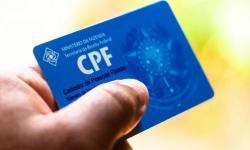Research carried out by the Central Bank of Brazil indicates that checks have been losing ground to other means of payment and that Brazil is the fifth country in which there has been the greatest decline in the use of checks as a form of payment. Find out more and learn about the history of the check.
But the research also points out that despite the replacement of the check sheet by other means of payment, Brazil is still among the three countries with the highest representation of the use of checks in relation to other methods. In 2005, of all payments made in the market, 26.4% were made with checks.
CHECK HISTORY
First of all, we must clarify that the history of the creation of the check is extremely controversial. There are several currents: Some say that the check was invented by the Romans, approximately in 352 BC. Other currents claim that between 1118 and 1307, the Templar Order created a system of pilgrim checks.
However, the version that seems most sensible to us is that the check was invented in the Middle Ages, when feudal lords deposited their gold in goldsmiths' workshops, the only place considered safe at the time. Over time, those responsible for archiving gold began to issue papers representing a specific quantity of the metal, giving the owner the right to redeem that quantity at any time.
These documents had fixed values and were often insufficient for the needs of nascent capitalism, which motivated other new documents that could be written by the depositor with the desired value, as long as it was covered by their deposits.
They were demand bills of exchange, initially accepted by the Medici bank in Florence and then by other establishments and which can be considered as the first checks, even though they did not have that name. This custom extended to the British Isles with the creation, in 1605, of the Bank of England, which assumed the function of storing the kingdom's gold and issuing papers representing it with its equivalent value expressed in pounds sterling. This gave rise to the first bank checks issued by a State.
With the creation of the Bank of England, bills of exchange reached a new height and both this and other banks began to give their customers blank blocks of these bills, which depositors filled in according to the withdrawal amount they wanted to make. Like today's checks, each sheet of these booklets had a slip, on which the withdrawal details were written and which would be used for verification.
Currently, the increasingly frequent use of credit and debit cards is making consumers put checks aside, as data from Banco do Brasil and the Central Bank confirm. This shows that the population is trusting electronic payments more. For experts, the use of checks is becoming increasingly outdated.
It is possible, nowadays, to find commercial establishments that have chosen not to work with checks. Likewise, there are those who use it as their main means of receiving money. It is for these we write.
CHECK VALIDITY
It is known that a check is a demand payment order made against a specific banking establishment that maintains, manages or makes available the issuer's financial resources.
Therefore, the stipulation of a deadline for payment between issuer and beneficiary has no value in the eyes of third parties and banking institutions, which may cash the check, even if post-dated.
As a credit instrument that it is, the check can circulate freely in the commercial market, that is, its withdrawal may be required by a third party who does not even have any relationship with the person who issued it.
But the check is also an extrajudicial executive title, like others, as provided in article 585 of the Code of Civil Procedure. However, its validity must be observed.
The check is valid for thirty days when issued in the same square or city. The validity is sixty days, when issued in another place or city. Even after these deadlines, the check may be paid by the bank, as long as the account has funds.
The check will expire six months after its presentation, or at the end of its validity period. Once the statute of limitations has expired, the check will no longer be able to support a judicial execution. However, it may still serve as evidence for a collection or monitoring action, as we will see later.
HOW TO USE
Every check is covered by cartularity, that is, it is worth what is written on it, materialized. Everything related to the check can only be required if it is present on the check itself. It is not related to the “causa debendi”, which is nothing more than the commercial relationship, or not, that gave rise to the check.
As stated above, the check must be paid within thirty days, when issued in the same square or city, and within sixty days, when issued in another location. When returned twice due to insufficient funds, the account holder - or drawee, is registered in the Unfunded Check Registry - CCF, and withdrawal will only take place with proof of payment of the check, preferably by presenting the check itself.
Within six months following its presentation, or period of validity, the check will be of an executive nature, that is, it may, for example, be the subject of a direct enforcement action.
For execution, there is no need for a protest, which is nothing more than restricting the drawee's credit, making the return of the check public. But here, we make an important reservation: according to the New Civil Code, the statute of limitations on the check will be interrupted if it is protested, once, within the period of its validity (CC, art. 202, III). ;
Six months after presentation or validity, the check loses its executive effect, that is, it cannot be the subject of an enforcement action. However, you may initiate a collection or monitoring action.
In turn, the monitoring action rescues the possibility of execution, only this time, the debt will be recognized through the judgment and then the judgment that recognized the debt written on the check is executed.
However, there is also a deadline for filing a monitoring action: there are trends that understand that the statute of limitations is five years and are based on art. 206, § 5º, I, Civil Code.
A second current is based on §3, VIII, art. 206 of the Civil Code and states that the statute of limitations is three years.
A third argument maintains that the statute of limitations for collecting the check through monitoring action expires in two years. This current is based on the Check Law (art. 61, L. 7.357/85).
There are also those who claim that the statute of limitations can reach twenty years.
HOW TO FILL OUT A CHECK
 Despite falling into disuse, an average of 41 million checks are cleared each month in Brazil. As a way to avoid fraud and ensure that your check is not returned due to incorrect completion, learn how to fill out a check correctly.
Despite falling into disuse, an average of 41 million checks are cleared each month in Brazil. As a way to avoid fraud and ensure that your check is not returned due to incorrect completion, learn how to fill out a check correctly.
In the image to the side, you can see a non-commercial check model, created for educational purposes for this content. Notice in the image that some fields are numbered and see below what information you must enter in these fields:
1. Numeric Value: The upper right field must be filled in with the numerical value of the check, legibly and without erasures. One tip is to place the # symbol before and after the number, as a way to prevent someone from changing the value of the check.
2. Amount in Word: In this field, the amount of the check must be filled in in full. For this field, there are two tips: i) put the value in full in parentheses, as a way to prevent someone from modifying what you wrote; and ii) fill the remaining space in the field with a line, as a way of making it unusable and preventing anyone from writing something in the remaining space. This way you will have more security.
3. Payee: On the line that starts with “a”, you must include the name of the person who received the check, that is, the person who will receive the payment. It can be an individual or a company who will receive your check.
4. Place and Date: In this field you need to enter the name of the city you are in and the day the check was written.
5. Signature: The check issuer's signature must be entered in this field. The signature must be the same as the ID and the bank registration signature form. If there is a difference in signatures, the check may be returned.
STILL ABOUT FILLING
Still on filling out, the check may be: i) payable to bearer; ii) nominal; iii) nominal not to order; iv) crossed; and v) endorsed:
i) To bearer: In the bearer check, there is no indication of who the beneficiary is, that is, field 3 will be blank. The check can only be issued to the bearer (without indicating the beneficiary) up to a maximum value of R$100.00. When this amount is exceeded, the check must contain an indication of the beneficiary (person or company to whom the payment is being made).
ii) Nominal: For checks with a value equal to or greater than R$100.00, the issuer is obliged to indicate the name of the beneficiary. The nominal check can only be paid by the bank upon identification of the beneficiary or the person indicated by him/her on the back of the check (endorsement), or through the clearing system, if deposited.
iii) Nominal not to order: Type of check that cannot be endorsed (transferred) by the beneficiary, so that the beneficiary himself must receive its value. To make a check non-to-order, the issuer simply needs to write, after the name of the beneficiary, the expression “non-to-order”, or “non-transferable”, or “endorsement prohibited” or another equivalent.
iv) Crossed: Both bearer and nominal checks can be crossed by placing two parallel lines, diagonally, on the front of the document. In this case, the check will only be paid by deposit into a current account.
v) Endorsed: The check may be endorsed when it is nominal and it is desired to transfer ownership to the third person. The then beneficiary must sign it on the back, write their name in full below the signature, indicate their ID and CPF and the name of the new beneficiary, who will be able to withdraw it or deposit it into an account, as the case may be, signing below the first.
WRITTEN BY: FRANCÊ Advogados (Automatic translation by Google)
SEE ALSO:
CONTACT US:
Problems with Checks? Consult us: our professionals work to defend the interests of our clients, both judicially and extrajudicially, providing the necessary legal advice so that you get your name clear again. We also carry out activities related to Collections, where we seek to find practical and objective solutions for our clients' collection portfolios. Find out more about our activities and take the opportunity to read our Articles and News.














